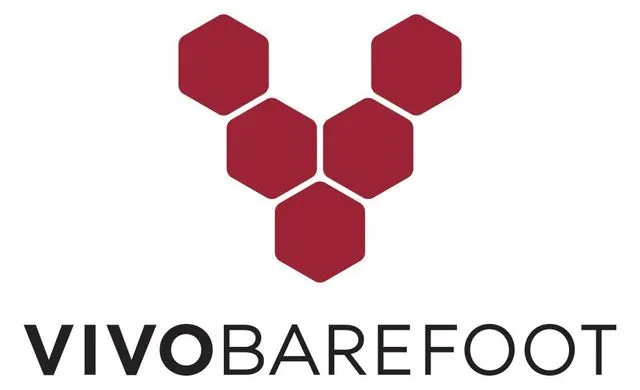
Recently i purchase a pair of VIVOBAREFOOT shoes, the trend of minimal shoes has been gathering momentum for a few years, in this article we will look at the positives and negatives associated with barefoot training. This is quite a lengthy article aimed at the interested individual, practitioner, athlete it may be a little wordy for the layman. By the end of the article I hope to give a better impression of reasons for switching, neurological basis for barefoot, associated gait changes, injury reduction/risk in order to give the reader the ability to make an informed decision themselves. (read time 10 minutes)
WHAT’S IT ALL ABOUT….
VIVOBAREFOOT has recently released a short film called “shoespiricy” a catchy title, the film focuses on the premise that the shoe industry has developed a problem for our feet by creating shoes that are over designed and created for fashion rather than function. The ability of companies to sell simple solutions for complex problems is a ubiquitous practice and is to blame for a lot of mis information. You can watch the film here
Our foot has evolved, or been created to perfection, each of our feet absorbs around 640 tonnes of pressure a day, there is 26 bones and 33 joints that all have relative motion to one and another. Our feet are the most constant part of our organism in contact with the environment. The ability of the body to efficiently distribute the 640 tonnes of pressure is of upmost importance, thankfully our foot has inbuilt mechanisms to store and release energy with each step.
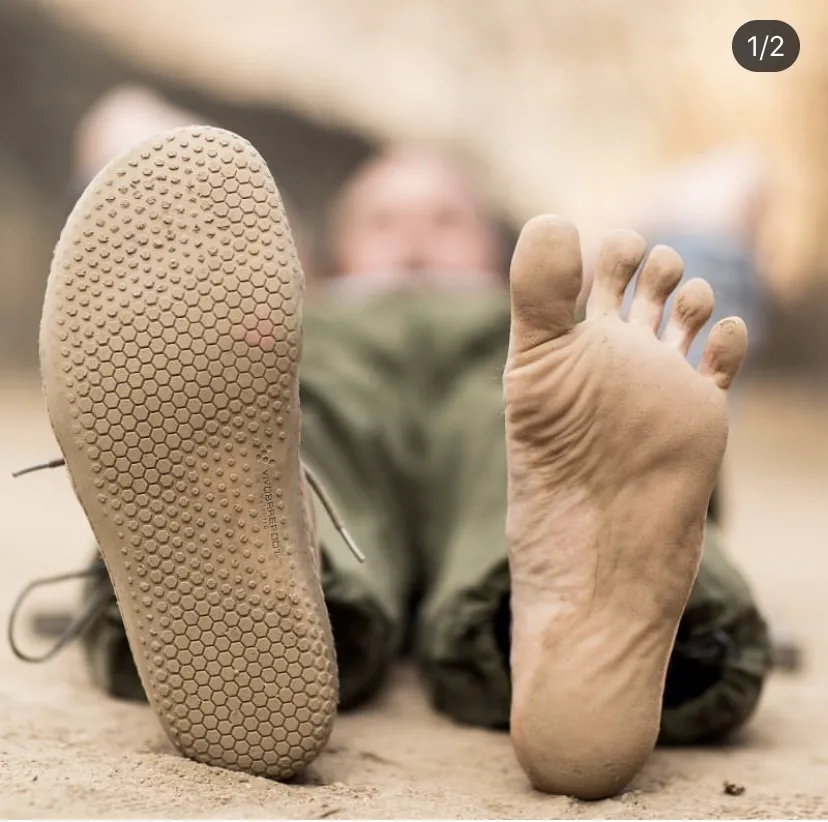
The trend more recently, not just in manual therapy and health care, but in general life is to get back to the basics. Cut the unnecessary complexity, get back to what works, we have seen a trend moving away from complex exercises back to simple ones like walking, these barefoot shoes follow along the same paradigm. Move back to letting the body do what it was created/evolved to do, even in the modern climate of healthcare it seems our innate ability to heal still (most of the time) trumps the most advanced pharmacology and it is this inborn intelligence that the theory aims to channel.
WHAT DOES THE RESEARCH SAY?
Just like most decisions in life, there isn’t particularly a right and wrong, but rather a better and worse. It’s often not the situation but how you handle it, this runs true fort barefoot running. Its not particularly the concept that is right or wrong, but is it suitable for you? and if so how do you need to adapt your running/training to accommodate it? As with most clinical decisions there has been numerous studies conducted on this topic, here’s a few quotes that we can try to simply after (skip this if your not interested in the quotes as ill try to summarise them in the next paragraph:
“It was concluded that when performed on a sufficient number of steps, barefoot running leads to a reduction of impact peak in order to reduce the high mechanical stress occurring during repetitive steps. This neural-mechanical adaptation could also enhance the storage and restitution of elastic energy at ankle extensors level.”
“compared to the shod runners the barefoot runners landed with more plantar flexion at the ankle this produced reduced impact forces. In particular significantly shorter stride length and contact times and higher stride frequency was observed”
“Other evidence suggests that sensory feedback largely from the glaborius epithelium of the foot is the element of the barefoot activity which induced these adaptations, the sensory insulation inherent in the modern running shoe appears responsible for the high injury frequency associated with running”
“Masai barefoot technology has never been documented in detail concerning changes in movement pattern or muscle activity. This study showed that Masai barefoot technology changes movement patterns, especially at the ankle, and increases muscle activity. It may therefore be a useful training method for strengthening the muscle groups of the lower leg”
“Based on their strike index, participants in this study appeared to alter their footfall pattern from a rearfoot to a midfoot pattern when changing from running shod to barefoot”
“Barefoot and barefoot inspired footwear may serve to reduce the incidence of knee injuries in runners although corresponding increases in Achilles tendon loading may induce an injury risk at this tendon.”
“It is acknowledged widely that unacceptable numbers of runners — between 30% and 70% — incur running-related repetitive stress injuries per year , but there is no consensus on how to prevent these injuries. The lack of any apparent decline in running-related injuries over the last 30 yr , despite much attention, considerable research, and sophisticated shoe designs, suggests that current approaches are not working effectively”
“Plantar proprioception activates reflexes and helps the central nervous system make decisions that help increase stability and avoid injury. If so, then the way in which people run when barefoot likely is to reflect the effect of ancient evolved proprioceptive adaptations to maintain stability, to avoid painful impacts, and to modulate leg stiffness. In turn, these feedback mechanisms, which are curtailed in a shoe, may help avoid some traumatic and repetitive injuries .”
“individuals who grow up wearing highly supportive shoes may develop abnormally weak feet, especially in the muscles of the longitudinal arch. Such weakness may limit the foot’s ability to provide stability and other key functions. This hypothesis never has been tested rigorously , but unshod populations are reported to have less variation in arch form, including a lower percentage of pes planus, and a lower frequency of other foot abnormalities .”
“In addition, there are some data that show using minimal shoes strengthens the foot . A strong foot may be more flexible and better able to control excess pronation and other movements that have been implicated in some running injuries .”
And my personal favourite study ever conducted:
“Noted that blindfolded individuals who were dropped from a elevated chair onto a gymnasium floor with their feet anaesthetised were unable to continue standing”
“ith increased loading of the longitudinal arch, the CNS increases the contractile activity of the plantar intrinsics and with electrical stimulation of these muscles, the plantar intrinsics have the ability to elevate the longitudinal arch.2″
SO, DOES IT WORK?
Ok, so there seems to be a fair bit of information on running barefoot, and it seems to be relatively indecisive. The first question seems to be why should anyone want to change from the normality of cushioned shoes to shoes with no cushioning? why change from the accepted norm to something different. Choosing to do something different always comes with an innate risk so the outcome needs to be worth it.
It seems that there are two different possible benefits from minimal shoes:
NEUROLOGICAL THEORY
Our feet are incredibly densely innervated, this means there are lots and lots of nerves in our feet. Wherever the body packs in nerves is often an important area, our tongues, our hands, our genitals, our faces and our feet all are very sensitive to touch. Touch goes from the skin and associated areas to the brain, the brain is then able to create a constant detailed living map of our bodies, this map enables us to make decisions about movement that can be very important. The better the detail in our brain map the better we can accurately and quickly respond to our environment. In laymans this can be one deffiniton of the word proprioception. Proprioception is our body knowing what each of the joints muscles and bones is doing at every single second of every day.

So the more in touch we are with our environment the more able we are to make split second decisions that can have huge consequences. Take for example someone who has great balance, great proprioception and is highly in touch with their body, as they step down a curb they slip and quickly make the adjustment to correct this slip before they injure themselves. Take patient two, poor balance, feet in shoes from a very early age and a lack of proprioception, they experience the same environmental factor, a slip, however they are unable to make a quick adjustment and thus fall fracturing their ankle. The same situation but two very different outcomes which are mediated by the persons ability to make quick adaptations using the nervous system.
Not only is the nervous system used to make snap adjustments when unpredicted things happen, it is also monitoring and balancing muscle tone to adapt to the task at hand. Take for example, king Arthur pulling the sword excalibur out of the stone, the sword only looks mildly lodged in the rocks, so he uses what he thinks is the right amount of muscle power to pull. Nothing happens. He pulls more, and more and more, still no movement. The graded progressive power he is using is the nervous system first underestimating the task, then recruiting more and more power to a task it assumed was easy. If our nervous system used the MAXIMUM amount of power for every task we would be perpetually exhausted and continuously breaking things. Our nervous system estimates the power/activity needed for each task by gathering information from past experiences and the environment. The better in touch we are with out environment, the better the ability to recruit the correct amount of muscle activity and protect us from injury and overuse.
When running in cushioned shoes our portal to the environment is cut off, the delicate process of modulating the muscular activity on each step is affected. These heavily cushioned shoes also often have a toe box that is too small, this inhibits our toes ability to spread out with each step. The ability of the toes to spread out in normal gait is incredibly important as there are small muscles in-between our toes, as our toes spread these muscles send signals to our brain that causes a reflex contraction in our quadricep (thigh muscles). So by compressing the toe box we are reducing down the natural reflexes that provide efficient locomotion.
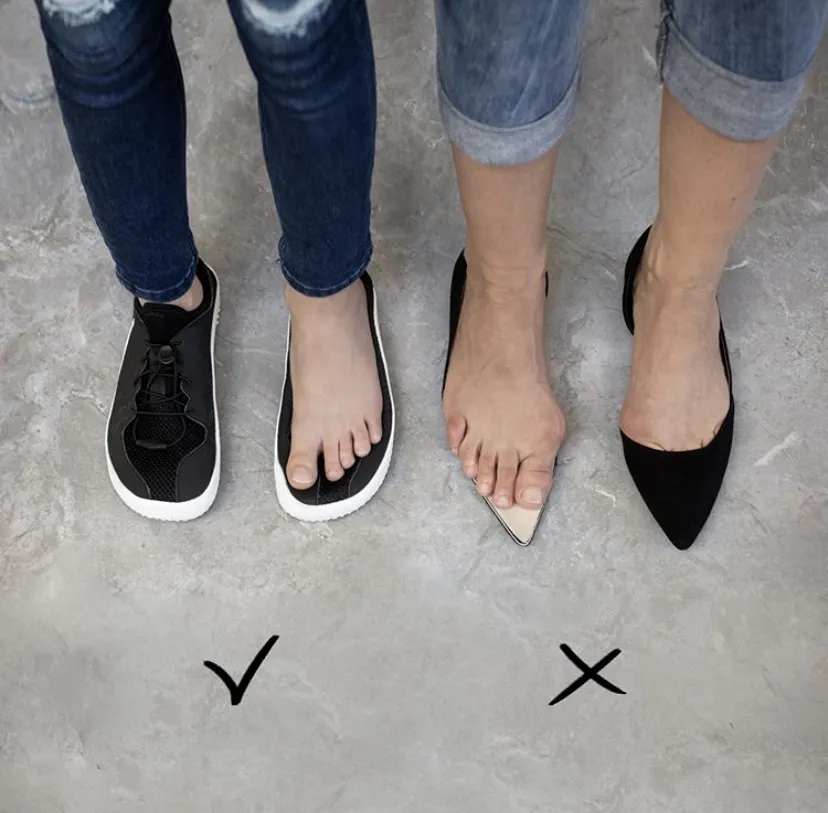
THE HEEL STRIKE
We also know that using cushioned shoes, particularly the heel cushioning, often leads to a “heel strike gait”. A heel strike pattern implies that as the foot swings forward the first impact happens on the heel bone, this is a normal event for walking, but it is argued that when running, if we didn’t have cushioned shoes we would not land heel first as the bodies ability to distribute the force of the footfall is reduced. When we land heel first we often have an out stretched leg, with the knee straight, reached in front of us, this very different from a mid foot or forefoot pattern, where we tend to land with the knee bent, allowing the body to absorb the shock slightly better. Not only is the knee bent in a forefoot/midfoot pattern but the ankle is also in a position to absorb force, these two joints form a great mechanism to distribute the pressure of running. The heel strike pattern tends to attenuate force through the boney system as there is a direct link from heel bone to shin bone to thigh bone to back bones are quite rigid and therefore not great at this, this is in direct contrast to the mid foot pattern were the ankle is bent, and the knee is bent, when the joints are bent the force can be attenuated by the muscle, which is in a far better position to distribute the force of running as muscle tissue is able to actively absorb force.
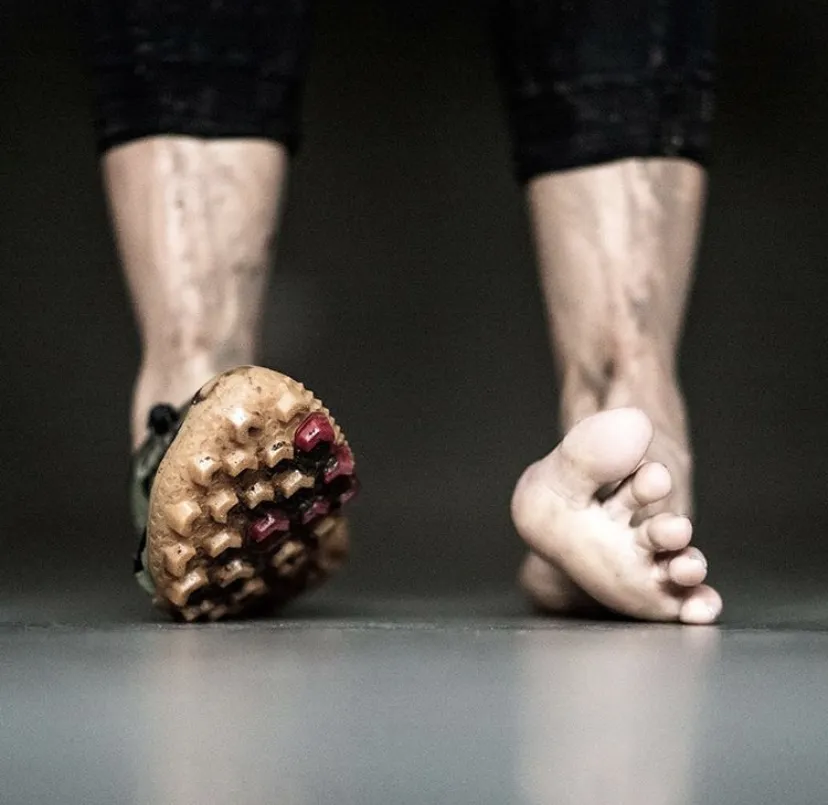
WHAT ABOUT ARCHES?
Have you been diagnosed with “fallen arches” or “hyperpronation”? have you been given expensive orthotics to lift there fallen arch and restore “normality”? This is common practise for some practitioners, however more recently the ubiquitous perscription of these orthotics is under question. Let us have a quick look at the structure of the arch, which will lead us to how it can collapse, and thus how to prevent or possibly reverse these effects and why orthotics could actually be worsening the situation.
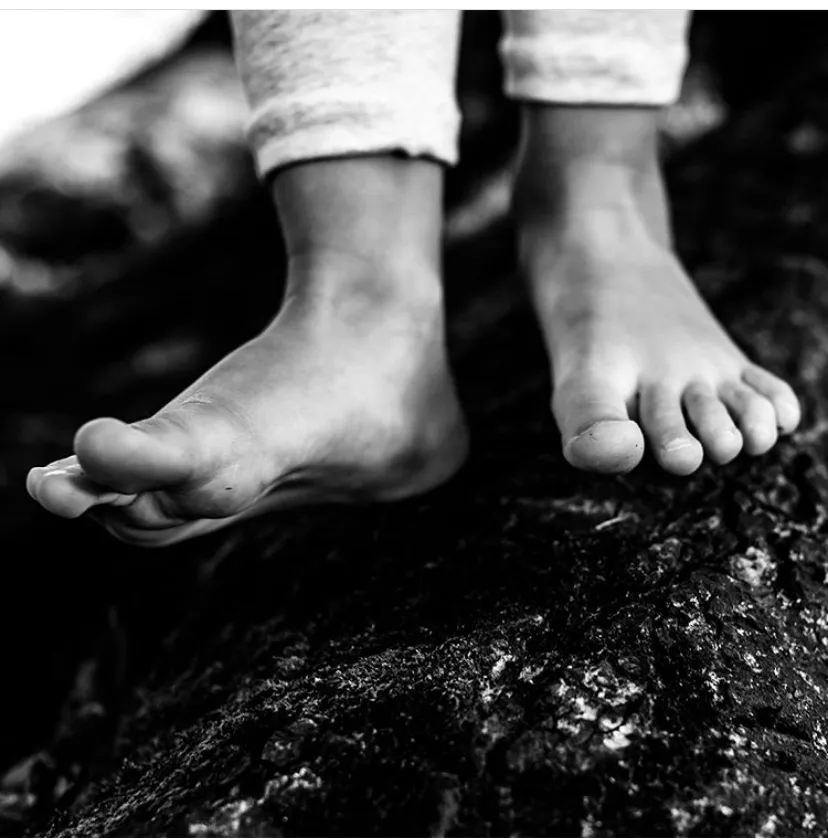
THE SUPPORT OF THE ARCH (LLSS)
Every biological system uses two principals to function: Tension and compression, together the distribution of force across the two we have named tensegrity.
The compressive element of the foot are the bones, for the medial arch these are the calcaneus, talus, navicular cuneiform and metatarsal. these form the building blocks of the arch.
The tension element comes from a few different structures that can be split into passive and active subsystems.
Passive : Plantar fascia, Deep ligamentous support (spring ligament) these are not controlled by the central nervous system and therefore provide passive support. They are however elastic, and can store and release an enormous amount of energy. Over long periods of time they can lose their elasticity and become lengthened, which is very difficult to reverse.
Active: The active component is split into intrinsic and extrinsic muscles
Instrinsic: Flexor digitorium brevis, Abductor hallicus, Quadratus Plantae.
Extrinsic: Tibialis Posterior, Peroneals, Flexor hallicus longus, Flexor digitorium longus.
We know that when we expose ANY muscle to increased stress, so long as we give it adequate time to recover, it will become stronger. This rule equally applies to the muscles that support the arches of the feet, the more we can expose them to stress, in the form of barefoot training/running/walking, the more the muscles will respond by strengthening, and thus lifting the arch.
With the same logic we can affirmatively say that if we give the arch a passive support in the form of orthotics/high arch support shoes the muscles (active support) of the arch will over time both weaken and atrophy, with a lack of active stability the arches, when not supported will rely on the passive support of the deep ligaments.
Over time, without the active support of the muscles these ligaments will become stretched, and due to the viso-elastic nature of the tissue, once stretched it is incredibly difficult to re-shorten the ligament. Therefore we have taken out both the active and passive support to the arch and become completely reliant on the external support.
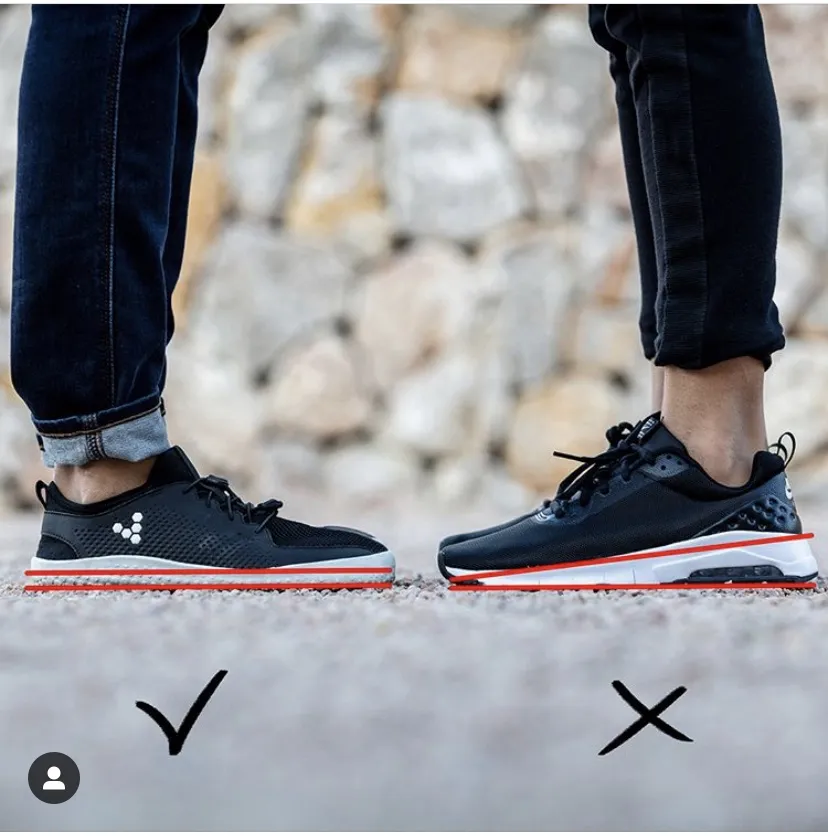
CONCLUSION
So what are we to make of the barefoot trend? positive or negative? as always the answer is it depends…
The shift from cushioned to barefoot shouldn’t be taken lightly. The risks of transferring should be weighed up against the benefits, the choice of the individual will have to be weighed up against the overall condition of the individuals body.
How far gone are the arches? is there reduced passive stability of the arch? is there any issues at the knee, hip, back? How are the rest of the individuals tissues? is there systemic inflammation? how is the microcirculation? how active is the individual? do they work on their feet? all these and more need to be taken into account. If it is deemed worth while to try to switch over the process should be looked at in the same manner as a gym program allowing for the adaptation and recovery of the tissues of the feet. If you made it this far, well done! the article was heavy going at points but hopefully you’ve learned a lot!
Luke Neal DC LRCC Chiro
